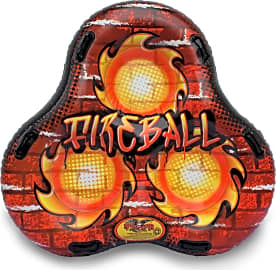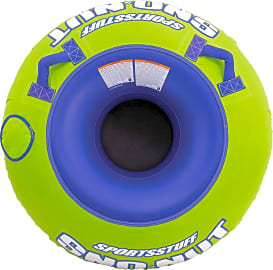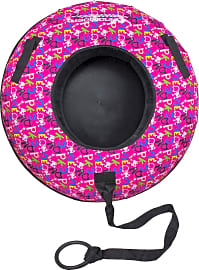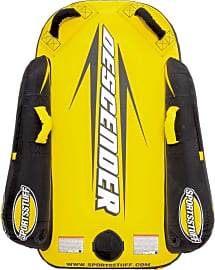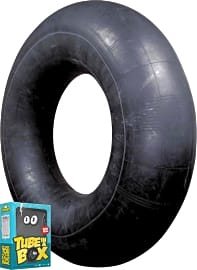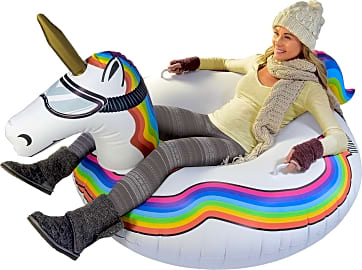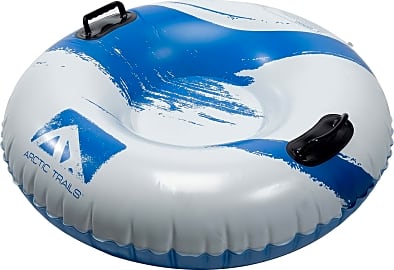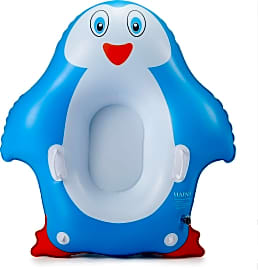The 10 Best Snow Tubes

This wiki has been updated 39 times since it was first published in September of 2015. Even if your list of favorite things about winter is, understandably, short, it should include getting to zoom down icy hills on one of these snow tubes. Our selection features budget-priced models good for youngsters as well as larger, highly durable ones that can also be enjoyed by adults. For sledding safety, always supervise children and keep them away from driveways and streets. When users buy our independently chosen editorial recommendations, we may earn commissions to help fund the Wiki.
Editor's Notes
February 01, 2021:
Snow tubes are tons of fun for both kids and adults, which is why we included options for both to use. We also realize that not everybody lives in a winter wonderland and may just want something affordable that they can use for a week or two, which is why we added the bargain-priced Franklin Sports Arctic Trails Single, even though it can't withstand heavy use. While snow tubing may normally be an individual activity, we know many kids will appreciate the Flexible Flyer Fireball and Flexible Flyer Snow Twist, which let them ride with a friend. Without a doubt, the most durable models are the ones that include some kind of heavy-duty fabric cover, such as the Slippery Racer Grande XL, Sportsstuff Sno-Nut, WindRider High Speed, and Sportsstuff Descender. While they are notably more expensive than coverless options, they are the best choice for those who need something that can stand up to a lot of abuse.
December 17, 2019:
Our selection of snow tubes includes ones for the serious thrill-seeker, including the Qpau Inflatable, a 50-inch-diameter model that can accommodate one-to-two riders at a time, and its raft-grade material ensures it can stand up to sharp pieces of ice, twigs, or other debris. It’s also got a tow-rope that is strung around the entire perimeter and held in place by grommets, which makes it easy for kids or adults to get it back up the hill when it’s time for another run.
Also joining the list is the Franklin Sports Arctic Trails Double which, as its name implies, can handle up to two riders at a time. It features four durable handles and a light weight that makes it a cinch to carry. The family-owned manufacturer, Franklin Sports, has been in business making sporting goods since 1946.
For more fun, family-friendly options for racing down the slopes, see our list of the best snow sleds for durable toboggan-style and disc-shaped models.
Be sure to practice sledding safety by only going in clear and open areas that are away from driveways and streets. Sledding children should always be supervised closely by an adult. To avoid head injury, they should go feet first, facing forward.
How to Protect Your Snow Tube From Slow Leaks (& Other Damage)
By and large, it makes more sense to sit inside of a snow tube than to lie on top of it.
The majority of snow tubes have been designed with a durable liner, which is good. But this is not to say that a snow tube isn't above the occasional puncture. Fortunately, there are precautions that you can take to avoid placing your tube in a compromising position. For starters, don't over-inflate your tube to an extent that it's just waiting to burst open. Use an air pump's pressure gauge to determine when the inner-tube is nearing its capacity, then confirm the tube is full by ensuring that there aren't dead spots.
By and large, it makes more sense to sit inside of a snow tube than to lie on top of it. Winter jackets are designed with several hooks and zippers, any of which could penetrate a snow tube, especially if that tube's owner is running up and jumping onto it at the beginning of every ride. When choosing a hill, do your best to avoid any slopes that might be lined with protruding - or even camouflaged - objects (i.e., twigs, stones, or shards of glass). Whenever possible, sled down a path that's already been smoothed over via other inner-tubes and toboggans.
Whenever you're done using a snow tube for the day, be sure to wipe, or even hose down, the bottom of it. In addition, try to store the snow tube along a smooth, flat surface. Cramming a snow tube in between several sharp objects can cause minor tears when you go to pull it back out.
If you plan on using a snow tube in the ocean or on a river during the warm-weather months, make it a point to avoid any jagged rocks or shells, especially in shallow waters. Lay a beach towel over any tube that is not being used to ensure that the midday sun doesn't cause it any damage.
How To Ride Safely & Responsibly On a Snow Tube
If you live near a sledding hill or a ski resort, snow tubes can be a lot of fun. But these tubes are also unique in that they do not feature safety belts or brakes. The good news is that if you ride responsibly, you will not have a need for either one.
Snow tubing should be done during the daytime, or, at the very least, you should seek out an area that has ample light.
In the event that your snow tube is speeding toward an obstruction, your best course of action may be to pull up on one side of your tube, causing it to veer wide, or topple over. The alternative is to simply fall back until you slide off of your tube. This option should only be attempted if there is nobody behind you and you are wearing a helmet.
An effective sledding hill operates based on a social contract. All of the sledders need to be considerate of one another. They need to avoid arguing and help each other up. Sledders need to use the far edges of the hill when they're heading back toward the top. And they need to wait their turn instead of speeding down less than a second after someone else has launched.
Snow tubing should be done during the daytime, or, at the very least, you should seek out an area that has ample light. You should avoid tubing on a hill that empties out onto a street, a frozen body of water, or a parking lot.
Any tube that is full of air and smooth across the bottom should glide its way straight down a hill. Leaning back with your feet facing forward should provide an even more dynamic ride.
A Brief History of The Snow Tube
According to one legend, snow tubing existed as early as the 1820s, at which point daredevils were riding roughshod across the white-capped Alpine Mountains. This account seems dubious, however, especially given pneumatic tires and air mattresses weren't available until the 1890s. A more widely-accepted explanation maintains that World War One G.I.s discovered tubing while experimenting with the scrapped tires from their vehicles.
By the mid-1980s, snow tubing had evolved into an alternate form of sledding.
American G.I.s were known for chaining a rubber tire to the back of a military jeep. This jeep would, in turn, be used to whip the tire - and any attendant soldiers - around. G.I.s were also known for using a tire's rubber inner-tube as a flotation device. Manufacturers got wise to this idea during the 1920s. They began designing inflatables and life preservers for use in oceans, pools, lakes, and rivers.
Snow tubing became an outgrowth of all this, although not until the 1970s. Prior to that consumers were more inclined toward the traditional braking of a toboggan. Snow tubing gained initial notoriety thanks to skiers who had taken to riding tubes along the black-diamond slopes of the Rocky Mountains. The response was so immediate that Colorado ski resorts began renting tubes out to the public.
By the mid-1980s, snow tubing had evolved into an alternate form of sledding. The American public came to appreciate that an inflatable tube provided a lot more cushion than a wooden toboggan. Since then, snow tubing has gone on to become an even more popular form of recreation. Today, there are high-elevation ski resorts that offer snow tubing, year-round.


